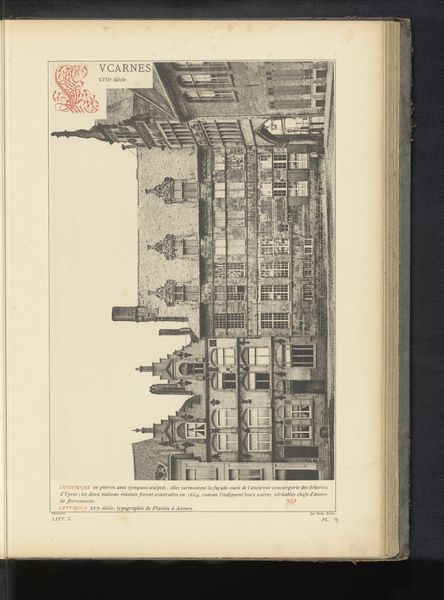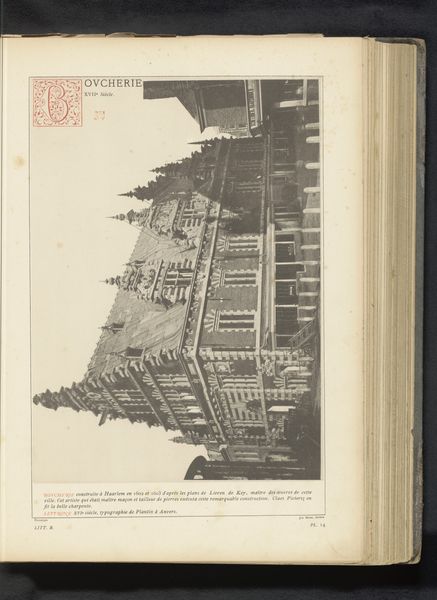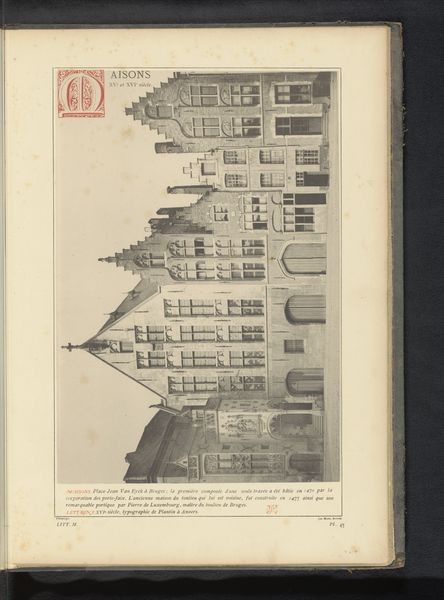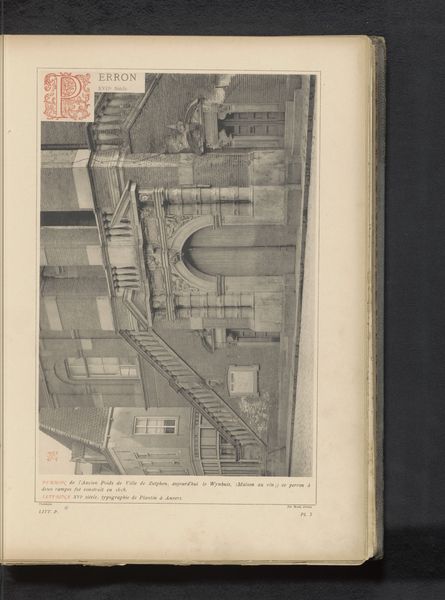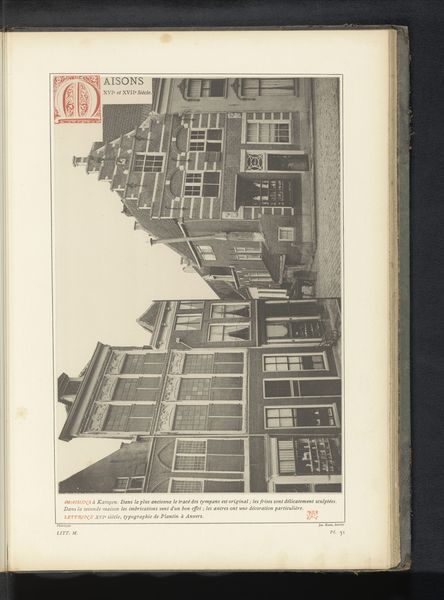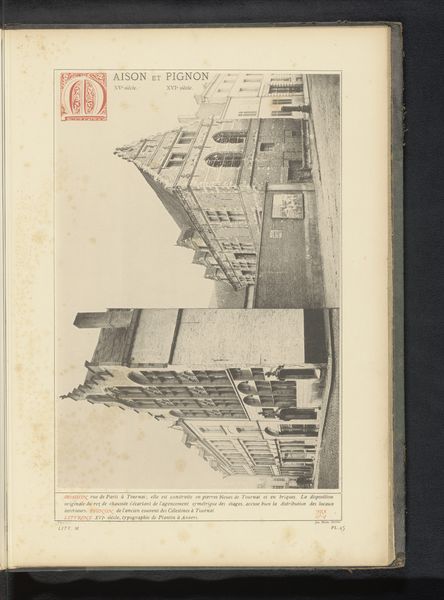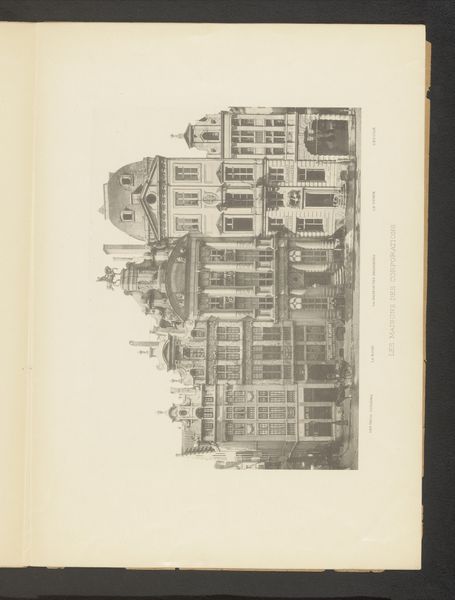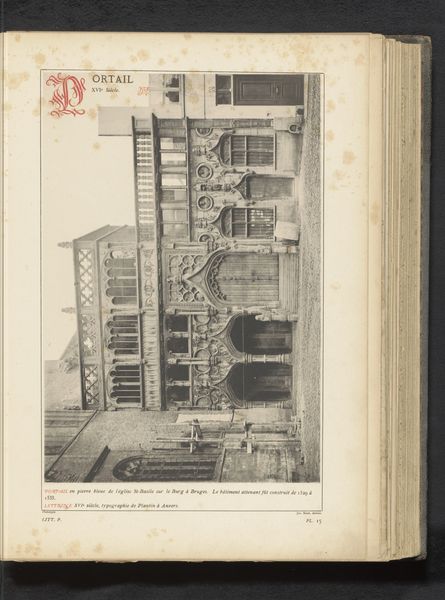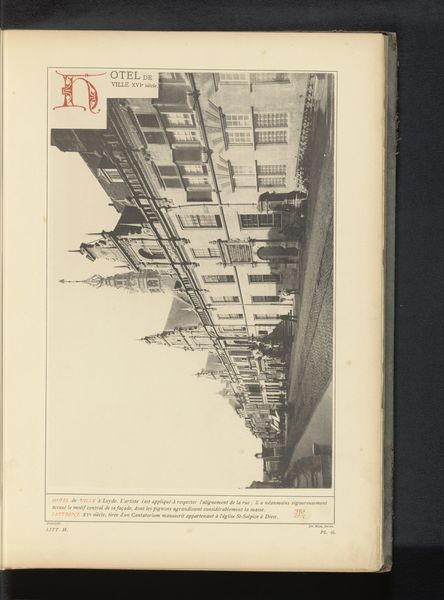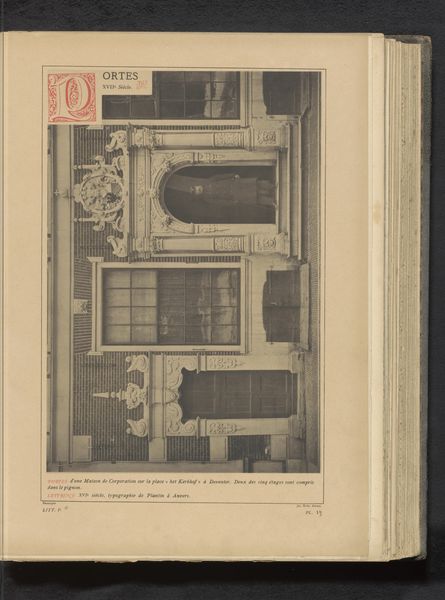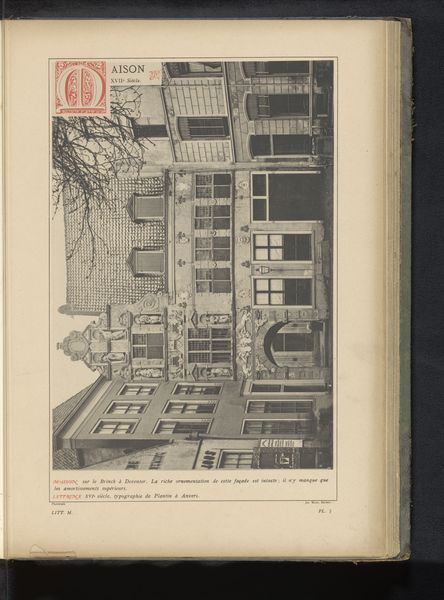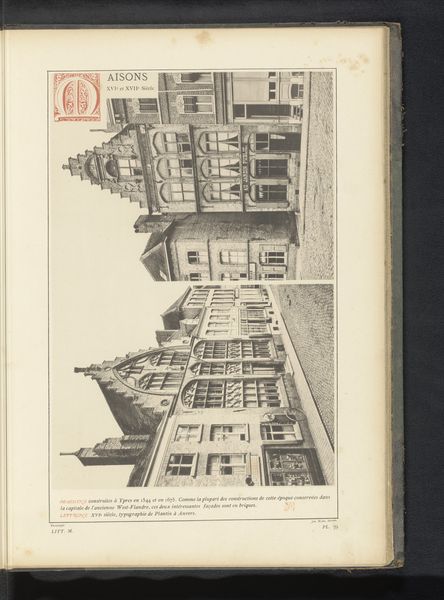
print, photography, engraving, architecture
# print
#
photography
#
cityscape
#
engraving
#
architecture
Dimensions: height 337 mm, width 229 mm
Copyright: Rijks Museum: Open Domain
Curator: Let's turn our attention to "Gezicht op de beurs van Lille," a print depicting the Lille stock exchange from before 1880. It’s created with a blend of photography and engraving, capturing a detailed cityscape. What's your immediate impression? Editor: My first thought is how solid, even imposing it feels, yet also very fragile as a memory preserved in ink and paper. The angles, textures, all point to resilience. Curator: Precisely. This image taps into our collective memory of urban centers, highlighting the exchange as more than commerce; it's a vital organ. The structure’s rigid form suggests stability and endurance, values prized by mercantile societies. But do you notice how the engraving almost softens the photographic realism? Editor: I do. It’s fascinating how the combination of techniques blurs the line between objective record and idealized image. It brings forth a kind of cultural placemaking. This reminds me that images like this served as a tool of promotion and pride for Lille. A testament to its economic prowess. Curator: That's an insightful point. The composition itself encourages the reading of a hierarchy: The building dominates, symbolizing order. But let’s not overlook the implied human presence, suggested by the scale of the architectural detail, speaking volumes about societal aspirations embedded within. Do you find yourself ascribing emotions to a structure through image and symbol? Editor: Absolutely! And it goes both ways, too. This print might evoke a feeling of civic responsibility and economic enterprise. This image, by its nature, carries these ideological components. Images construct collective identity and shape our understanding of history. Curator: It makes me think about the passage of time. Today, in our digital landscape, what symbols of resilience are we creating for future generations? Editor: That’s a pertinent question. As image technologies rapidly change, how do we guarantee authenticity or veracity to future audiences interpreting our built and mediated environment? Something for us all to ponder long after we've left this exhibition.
Comments
No comments
Be the first to comment and join the conversation on the ultimate creative platform.
